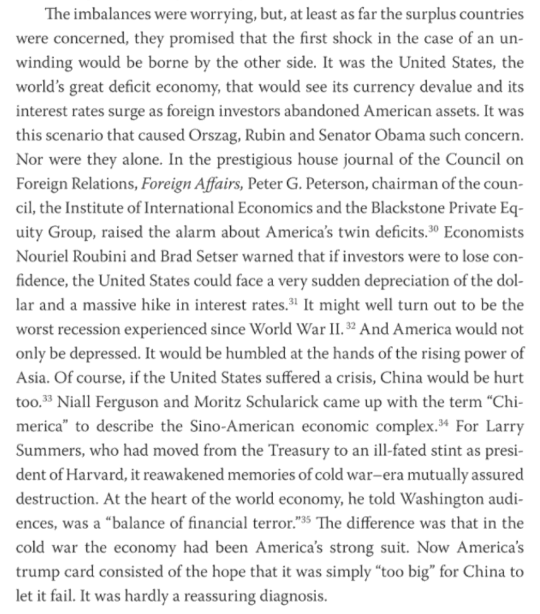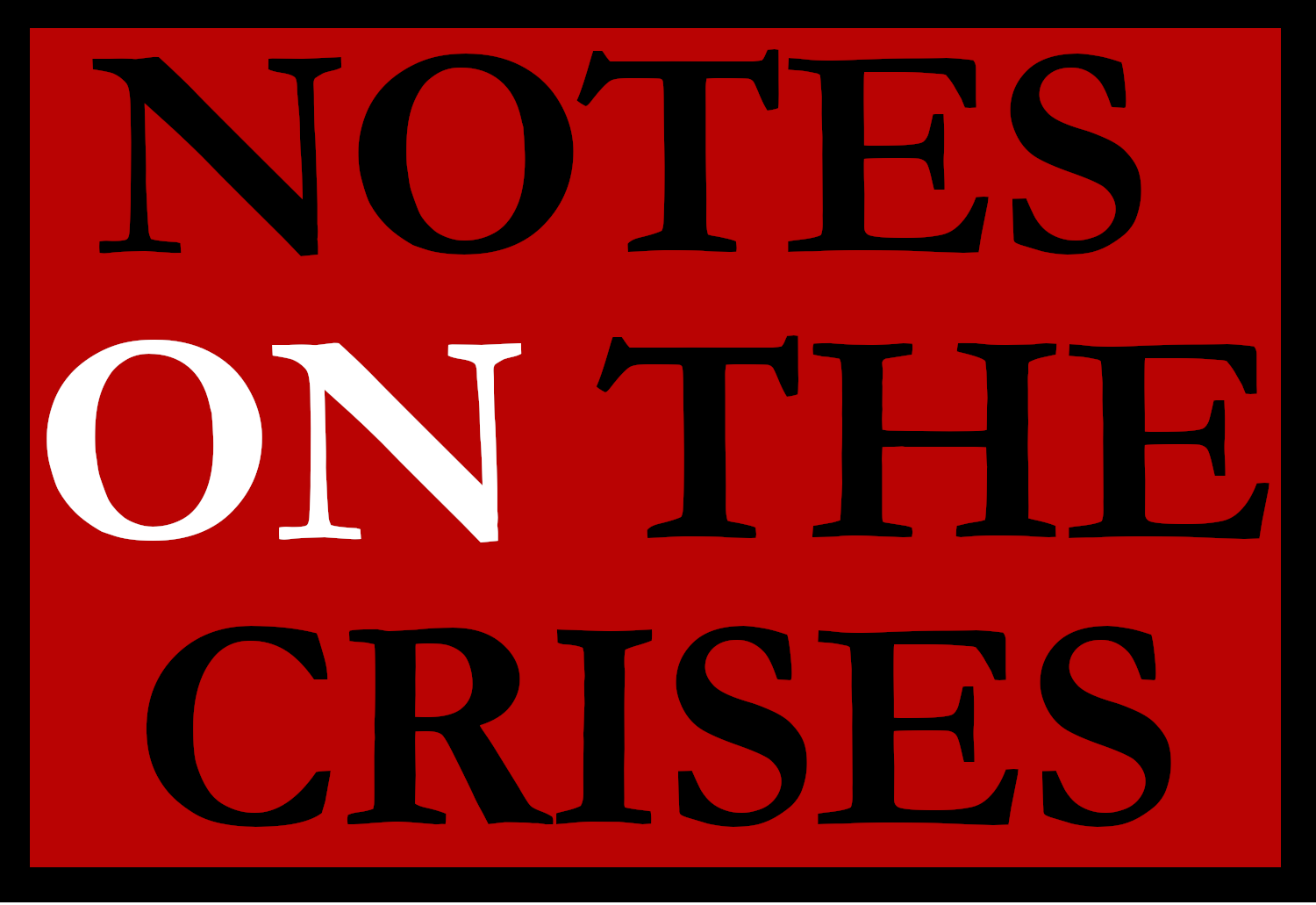The Federal Reserve's Coronavirus Crisis Actions, Explained (Part 3)
The International Aspects


This is part 3 of my coverage of the Federal Reserve’s Coronavirus actions. You can read Part 1 here and Part 2 here. I think I’m going to make this an ongoing series and write new Parts as more details about Federal Reserve programs come out. For example, a major wild card is how exactly the “Main Street Lending Program”, which seems to be separate from the “stimulus” bill’s funding to the Small Business Association for forgivable loans, is going to be structured. If 2008 is any guide, there is going to be a range of new facilities, significant facility changes etc. announced in the next months which deserve coverage. This series is also extremely popular! Part 1 has gotten over 13,000 unique views, while Part 2 has gotten nearly 10,000 unique views. I hope this series becomes an extremely useful real-time record of the Federal Reserve’s interventions that facilitates writing about the crisis (including my own!).
This Part is unique from the first two Parts and is in some sense a sub-series in that it focuses on a distinct set of economic problems we have not yet discussed. While Parts 1 & 2 focused on the domestic actions of the Federal Reserve, Part 3 is focused on international actions.I trace this story by recounting the actions taken during the Global Financial Crisis of 2007-2009, the Eurozone crisis and 2013. Once the background context is illuminated, I will then go through the Federal Reserve’s first internationally coordinated announcement a little over two weeks ago on March 15th to their last announcement March 20th. The centerpiece of these actions is one policy tool- the Central Bank Liquidity Swap-Lines(CBLS).
Central Bank Swap lines have been around since the 1960s but they came to prominence among financial and monetary policy experts (though importantly, not the public at large) during the 2008 crisis. This story is the centerpiece of Adam Tooze’s encyclopedic guide to the Great Financial Crisis and its aftermath named Crashed. In essence, central bank swap lines are lines of credit that central banks provide each in each other’s respective currencies. So, for example, a bilateral (two-way) swap line agreement between the Bank of Canada and the Federal Reserve would involve each central bank exchanging (or swapping) a certain quantity of Canadian dollars for a certain quantity of U.S. dollars at the current spot exchange rate. What is unique and interesting about central bank swap lines is that for ordinary private borrowers, one’s IOU is not a very valuable asset. If you are buying a house for example, the ability to seize the house in case of default is critical for mortgage lenders. With central bank swap lines though, the IOU is very valuable! In case of default, the Federal Reserve still has a quantity of Canadian dollars it can spend into the Canadian economy or use to buy U.S. dollars on the open market! Thus all central bank liquidity swaps are collateralized loans, even if the “collateral” is simply a quantity of the local currency which central banks can issue in unlimited amounts.
Why do swap lines matter? The key is to understand that, from a financial point of view, international trade flows are secondary to the financial flows that cross borders. The exchange rates between currencies and the payments across borders are not really about the payments that flow in one direction or another to pay for goods and services. If you look at the world economy from the trade point of view, the dollar seems like it should be fragile. The United States has been constantly running current account deficits for decades, with little end in sight. From a trade centered point of view, this suggests that the U.S. is in danger of a sudden currency collapse and import-induced high inflation- perhaps even hyperinflation. Indeed this was a centerpiece of the Brookings institution’s “Hamilton Project” in the mid-2000s, which directly informed and staffed the Obama Administration that would soon follow. Tooze helpfully reminds us in Crashed that:

His book is to a large degree a (partial) explanation for why this view turned out to be incorrect and sets forth what actually happened during the 2008 financial crisis and its aftermath. Rather than looking at the net flows which make up trade deficits and current account deficits, the financial view helps illuminate gross flows. Instead of seeing a substantial current account deficit, what you see is all the dollar denominated liabilities issued by governments, financial institutions and non-financial corporations around the world. Even “supranational” organizations issue large quantities of dollar denominated debt! This interconnected, tangled and thick web of dollar debts means that there’s a constant hunger to secure dollars to make payments every day. Financial time, especially for large institutions, is much faster than trade time. Trade issues are long term, structural and slow-moving. Financial issues can blow up the entire system of payments in a day. As I said in a talk at the University of Manchester 20 months ago:
It is the extraordinary amount of dollar denominated debt [issued outside the United States] which at once raises the monetary sovereignty of the United States above all others and pulls down the monetary sovereignty of other countries. This is what makes the U.S. the currency hegemon. Thus, anything that leads to more dollar denominated debts [offshore] strengthens dollar hegemony and moves away from dollar denominated debt [offshore] weakens dollar hegemony. However, it would take a truly massive structural change to the way international economics works to transform the current pattern of currency debts such that the U.S. was no longer the currency hegemon.
More and more financial and central bank experts are forming a consensus around the view that when crises strike, we should expect the dollar to strengthen and foreign interest rates on dollar denominated loans to spike as a shortage of global dollar liquidity emerges.
This is exactly what happened. See, for example, this good article from March 9th on Bloomberg:
A key gauge of banking-sector risk, known as the FRA/OIS spread, soared to its highest level since 2011, while dollar swap spreads widened, suggesting stresses in U.S. markets are becoming increasingly severe. A gauge of financial conditions in the U.S. tumbled, with the Federal Reserve on Monday lifting the amount of temporary cash it’s willing to provide markets. [...] Liquidity strains are unleashing “deep-seated fears that the coronavirus crisis could lead to the same dislocation of financial markets that we saw over a decade ago,” wrote Steven Barrow, head of foreign-exchange strategy at Standard Bank, in a note to clients. “The worst-case scenario for the market is that dollar liquidity shortages start to emerge, putting leveraged borrowers in jeopardy”
It is here where swap lines are meant to intervene. The levels of foreign-denominated debt in the global financial system don’t automatically correspond with systemic stability and instability isn’t in anyone’s interest. This is true even for the United States, which is “winning” the financial game of getting others deepest in debt in its currency. Swap lines help central banks, especially the Federal Reserve, manage how stressed this hierarchical system becomes. In the process, the emerging networks of swap lines restructure the international currency hierarchy even as they are in some sense responding to it.
This restructuring essentially began when The Federal Reserve, Bank of Canada, Bank of England, Swiss Central Bank and the European Central Bank announced on December 12th 2007 they were entering into swap line agreements to ease global funding markets. Throughout 2008 more swap line agreements were announced, with a growing list of countries. This successfully averted currency crises in 2008, but at the cost of transparency. In relative obscurity, trillions of dollars became available to central banks around the world while the foreign policy implications remained unexamined by foreign policy experts.
On May 9th 2010, during the early days of the Eurozone crisis, these same central banks announced that they were re-establishing central bank liquidity swaps. The Bank of Japan soon joined them (as they did during 2008) and 3 years later, On October 31st 2013, these 6 central banks permanently established “unlimited” swap line agreements with each other. Having access to what are effectively unlimited dollar currency reserves from the United States enhances the other 5 central bank’s monetary sovereignty significantly and gives the U.S. the greater ability to manage the global financial system built upon dollars. These countries can provide dollar liquidity to their own banking systems or other countries without the United States having to directly bear any risks or uncertainties. It is for this reason that some have started calling these 6 countries the “C6”.
In the world heralded by our new global “swap line standard”, understanding the structure of swap line networks is almost as important as understanding the pattern of foreign denominated debt across the planet. The C6 countries at the top have permanent, unlimited swap lines with each other. Countries in the high tier often have quantity-limited permanent swap line agreements with countries in the top tier and may be able to access a temporary quantity-limited swap line from additional top tier countries (especially the United States) during a crisis. Countries in the middle tier may be able to get access to a quantity-limited swap line agreement with a country in the middle tier. Meanwhile, countries in the lowest tiers aren’t able to access swap lines with the top two tiers (or any tiers) at all. Liquidity of the dominant currency is sub-franchised downwards but with many slips from the cup, which brings us up to date to 2020.
March 15th
In Part 1 I said “[t]he March 15th announcement was pretty dramatic, at least as dramatic as technical policy changes by a central bank can get”. While I didn’t discuss it in that post, part of its drama was the return of coordinated central bank liquidity swap line actions. The title of the separate announcement tells the story; “Coordinated Central Bank Action to Enhance the Provision of U.S. Dollar Liquidity”.
The announcement is aimed at two things- making dollar liquidity to other central banks more attractive and increasing global dollar liquidity in longer maturity markets. They accomplished the first by lowering the premium over the dollar Overnight Index Swap (OIS) interest rate from 50 basis points (.5%) to 25 basis points (.25%). As I said in the last post:
The Overnight Index Swap is a derivative contract which allows market actors to “hedge” or bet on what short term borrowing rates will be over the course of the contract. The premium a lender sets over OIS is basically what they’re charging to be compensated for the “credit uncertainty” they are taking on.
They accomplished the second by extending the maturity of central bank dollar loans to their domestic economy. Up until now dollar loans have been offered at 7 day maturities whereas now they’ll be offered at 84 day maturities. If that number of days seems random, it's not. It's meant to be approximately 3 months or roughly the length of a financial quarter.This helps avoid end-of-quarter funding market stresses and may potentially help avoid end-of-year funding market stresses like those that were experienced in December of 2018. This, of course, was not nearly sufficient. While dollar funding stresses in the “C6” countries are important and supplying dollar liquidity can help support global markets, Coronavirus is a global crisis and “emerging market” countries need support as well. Unsurprisingly then, this was not their last announcement.
March 19th
On March 19th they made a follow up announcement which unsurprisingly expanded swap line networks to a larger list of countries, what I called the “upper tier”. The announced list is worth quoting in full:
[T]he Reserve Bank of Australia, the Banco Central do Brasil, the Danmarks Nationalbank (Denmark), the Bank of Korea, the Banco de Mexico, the Norges Bank (Norway), the Reserve Bank of New Zealand, the Monetary Authority of Singapore, and the Sveriges Riksbank (Sweden).
As one would expect from past experience, those in the upper tier nonetheless do not get unlimited access:
These new facilities will support the provision of U.S. dollar liquidity in amounts up to $60 billion each for the Reserve Bank of Australia, the Banco Central do Brasil, the Bank of Korea, the Banco de Mexico, the Monetary Authority of Singapore, and the Sveriges Riksbank and $30 billion each for the Danmarks Nationalbank, the Norges Bank, and the Reserve Bank of New Zealand. These U.S. dollar liquidity arrangements will be in place for at least six months.
This goes much further in dealing with the problem but it remains to be seen whether it will be enough, especially when you consider that many central banks don’t have the legal authority to lend directly to non-financial corporations (who are probably seeing the acutest need for dollar finance). And what about the countries excluded from global swap line networks who need to undertake a large fiscal response with low (or no) degrees of monetary sovereignty? I will be returning to this point in future posts
March 20th
In the final international announcement, the C6 announced that the 7 day maturity dollar loans they were making to their respective domestic banking systems once a week would now become daily operations. As the crisis became acute and the U.S. (especially New York City) began to shut down, it simply became insufficient to inject dollar liquidity once a week and expect that to keep the system stable. This announcement, paired with the announcement the day before, managed to stabilize global dollar liquidity last week. The dollar fell by the largest amount since 2009, after experiencing the largest rise since 2008 in the weeks before that. Thus, these announcements have been a short-term success. While Important, the main structural problems remain.
Conclusion
I’m left with a series of questions about the global aspects of the Federal Reserve’s Coronavirus crisis response so far. How will the Federal Reserve help those on the low end (especially those with little to no monetary sovereignty) respond to Coronavirus? Public health crises require large amounts of spending while financial obligations are either cancelled or effectively paid by governments. Will those on the low end be left in the lurch all together? Will non-financial corporations in “developing countries” get sufficient access to dollar liquidity? And what happens to countries with lots of dollar denominated debt but who are on the outs with the west (e.g. Turkey) when they are left out of swap line arrangements during a public health crisis? I think it is easy to predict that this is not the last we’ll see of central bank liquidity swap lines in this crisis.
Sign up for Notes on the Crises
Currently: Comprehensive coverage of the Trump-Musk Payments Crisis of 2025
